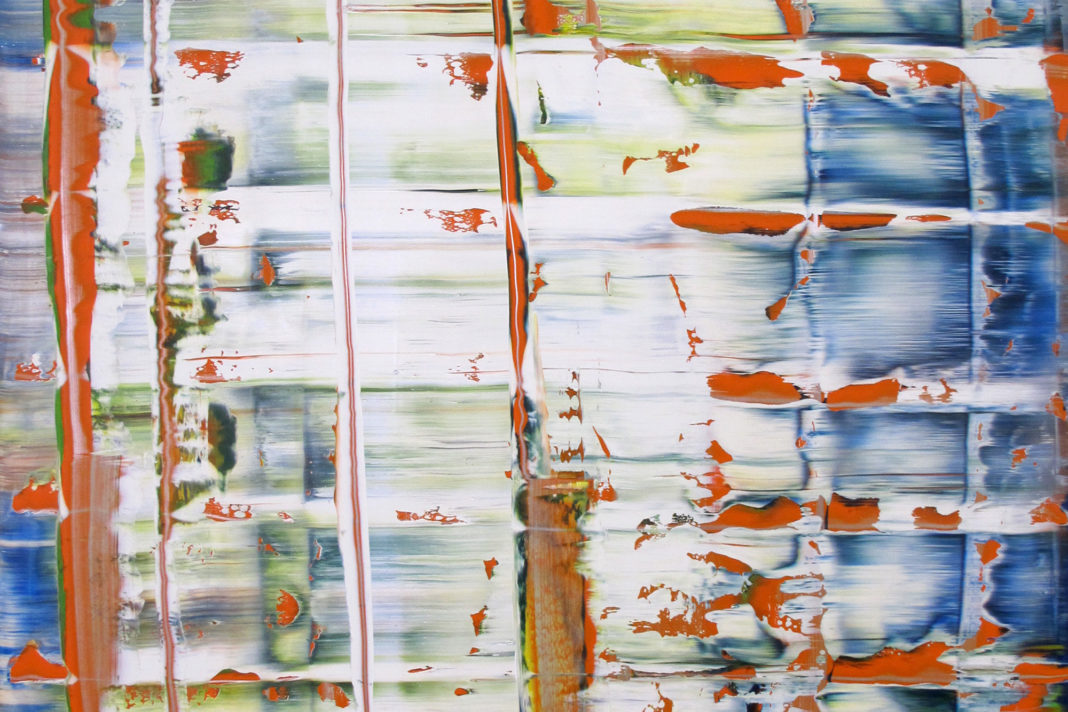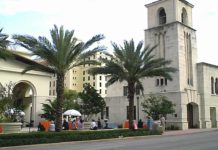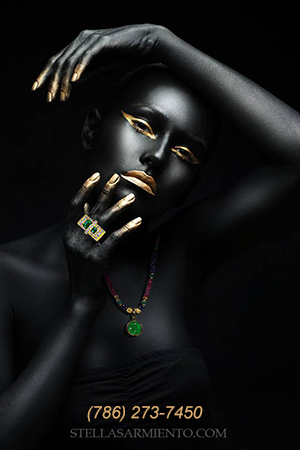Gerhard Richter
Nationality: German
Birth Year: 1932
Place of Birth: Dresden, Germany
Biography
Occupation: Painter
Education: Dresden Art Academy, Dresden; The Düsseldorf Academy, Düsseldorf
Movement: New European Painting/Abstraction
Gerhard Richter’s Famous Artworks
“Woman Descending the staircase,” 1965
“Mrs Wolleh with children” 1967
“Confus,” 1986
“Ice,” 1989
“Lesende (Reading),” 1994
Gerhard Richter is a prominent German artist. He has successfully explored the realms of Abstraction and photo-paintings, taking them to new levels.
Gerhard Richter’s Early Years
Gerhard Richter was born in the town of Dresden in February, 1932. When he was still a child, the Second World War broke out, and affected his life deeply. His father was conscripted into the army, and two uncles died, and they all faced great hardships because of war-related economic problems. He was an adolescent by the time the war ended. By then, Germany was under Soviet control and had turned into a very different place. During this time, his enthusiasm for art came to the fore. In 1947, he quit grammar school, joining a vocational school professionally. He also enrolled for painting classes, conducted in the evening. In 1948, he left home and shifted into an apprentice-hostel in Zittau.
Gerhard Richter’s Move Back to Dresden
In 1951, Richter returned to Dresden and started studying art formally as a painter at the Dresden Art Academy, choosing to join the new mural painting department under the supervision of Heinz Lohmar. Even though access to West Germany during this time was limited, he managed to travel there many times during the 1950s. After his course was completed in 1956, he took up a post at the academy. He would teach evening classes to the public, for which he received a stipend and a studio in return. Though life was comfortable, he was increasingly troubled with state-imposed constraints in East Germany. Visiting Documenta II in Kassel in 1959, he realized that freedom given to artists on the other side of the Iron Curtain shaped their work in a way that was not possible for him. In 1961, just a few months before the construction of the Berlin Wall began he defected to West Germany, declaring himself a refugee.
Gerhard Richter’s Düsseldorf Academy period
Once in West Germany, Richter decided to study again and joined the Düsseldorf Academy in 1961. It was during this period that he held his first exhibition in collaboration with Manfred Kuttner at the Junge Kunst (Young Art) Gallery at Fulda. In May 1963, Gerhard Richter exhibited with Lueg, Polke, and Kuttner in Düsseldorf.
In October 1963, he and Leug exhibited their work in a novel setting, a furniture store. Here, there was television footage, and props, and artists working live. Having established a secure foothold in the art world, he set out and experimented with photographic images and painting, thus producing initial works using the technique of blurring. When he left the academy in 1964, he was ripe and ready to begin his artistic career.
Abstraction in Gerhard Richter’s Artworks
By the 1970s, Gerhard Richter’s paintings was widely exhibited and he was extremely well-known in the art circuit. His first solo show was in 1969. He also had group shows in Germany as well as internationally, in cities like Tokyo and New York. Earlier he had played around with Geometric Abstraction in 1966, and now he returned to it with full force in 1971. The “Grey Paintings,” a series which he had begun in the mid-1960s carried on into the 1970s, forming a significant part of his work. Throughout the 1970s and 1980s, he pushed the limits of what could be had from exploring and experimenting with Abstraction and Minimalism. Richter’s series of photo-paintings showing how the suicide of it two most notorious terrorists in prison brought to an end to the Red Army Faction became his most significant work in the 1980s. It was politically provoking, and brought into focus Germany’s position in the post-war era. By the end of the 1980s, he was enjoying artistic success and prominence. His works were in great demand internationally, and in 1993, a retrospective of his work in Paris, and another, in 2002, at Museum of Modern Art in New York, further cemented his position.
Richter still explores his art through Abstraction today. You can buy Gerhard Richter’s artworks online.
Gerhard Richter’s Personal Life
Richter married Ema Eufinger in 1957, and they had a daughter, Betty. This marriage broke down by the 1970s. In the mid-1970s, he grew close to fellow-artist and sculptor Isa Genzken, and they married in 1982. In 1995, for the third time, he married Sabine Moritz, whom he had taught earlier, and he now has two children by her. They live in the suburbs near Cologne in Germany.
Gerhard Richter’s Major Exhibitions
2008 – Serpentine Gallery, London
2009 – National Portrait Gallery, London
2011 – Tate Modern, London
2012 – Centre Pompidou
2012 – Neue Nationalgalerie, Berlin
Gerhard Richter’s Museums/Collections
Art Institute of Chicago
Dallas Museum of Art, Texas
Fine Arts Museums of San Francisco
Guggenheim Berlin
Guggenheim Bilbao, Spain
Guggenheim Museum, New York City
Metropolitan Museum of Art, New York City
Metropolitan Museum of Art
Museum of Modern Art, New York City
National Galleries of Scotland, Edinburgh
National Gallery of Art, Washington D.C.
National Gallery of Canada, Ottawa
Tate Gallery, London, UK
Books/Publications
“Gerhard Richter: Landscapes” by Dietmar Elger and Hubertus Butin
“Gerhard Richter: A Life in Painting” by Dietmar Elger and Elizabeth M. Solaro
“Gerhard Richter: Patterns: Divided, Mirrored, Repeated” by Gerhard Richter
http://www.blouinartinfo.com/artists/gerhard-richter-291

















